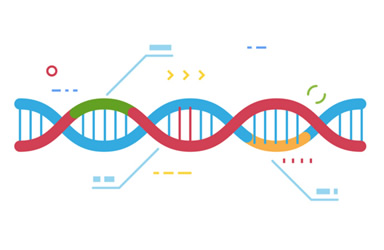
Another CRISPR Tool Shows Great Potential to Advance Science
June 5, 2019| |

The genome editing toolbox now includes CRISPR-Cas3, which enables "chewing up" of DNA with high speed and efficiency.
CRISPR-Cas9 has been widely used in agricultural improvement, biomedical research, and food science. It is described as a molecular scissor because of its ability to create a single double-strand break at a target site along the DNA. After cutting a section of the DNA, the cell's ability to repair DNA is used to discard or add nucleotides. A more precise tool, CRISPR-Cas12 (also known as CRISPR-Cpf1), was also developed and used by researchers.
Another tool known as CRISPR-Cas3 was reported in Molecular Cell. CRISPR-Cas3 is different from the two CRISPR tools because of its ability to erase long sequences of DNA in eukaryotes like plants and animals. This new CRISPR tool does not make a break, but chews up the DNA with high speed and effectivity. Furthermore, it is highly specific and programmable, making it a promising tool to advance science.
Read more information from Genetic Literacy Project, Science Daily, and Molecular Cell.
| |
Biotech Updates is a weekly newsletter of ISAAA, a not-for-profit organization. It is distributed for free to over 22,000 subscribers worldwide to inform them about the key developments in biosciences, especially in biotechnology. Your support will help us in our mission to feed the world with knowledge. You can help by donating as little as $10.
-
See more articles:
-
News from Around the World
- Biofortification Improves Nutrition and Benefits Developing Countries, Research Reveals
- AgriLife Research Study Gene Expressions in Sugarcane Aphid-Resistant Sorghum
- Study Reveals Climate Change is Already Affecting Global Food Production
- Japan Initiates Discussion of Labeling for Genome Edited Foods
- Biotech Critics Seeks Complete Ban on GM Crops in India
- Functional Regulatory Systems Vital to Reap Biotech Crop Benefits, Experts
- 170 Scientists Gather in Barcelona to Share Forefront Plant Research
- Long-term Adoption of GM Maize in Spain and Portugal Proves to Benefit Farmers and the Environment
-
Research Highlights
- Bt Proteins in Rice Degraded in Paddy Soils
-
Beyond Crop Biotech
- Exploring the Origins of the Apple
- Transgenic Fungus Rapidly Killed Malaria Mosquitoes in West African Study
-
Resources
- ISAAA's New Journey Begins
-
Plant
- Chinese Researchers Study Alkaline Tolerance in Rice Using CRISPR-Cas9
- Another CRISPR Tool Shows Great Potential to Advance Science
-
Read the latest: - Biotech Updates (December 10, 2025)
- Gene Editing Supplement (November 26, 2025)
- Gene Drive Supplement (February 22, 2023)
-
Subscribe to BU: - Share
- Tweet
